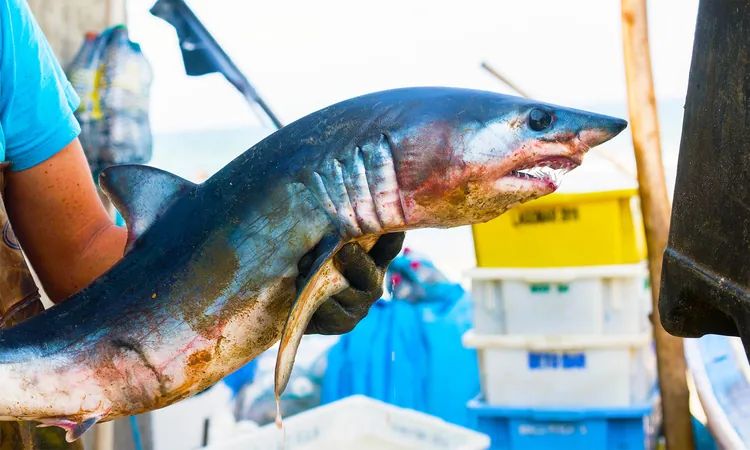
Major Breakthrough in RSV Prevention: Infants Experience Dramatic Drop in Hospitalization Rates!
2025-05-08
Author: Ting
A Historic Shift in RSV Hospitalization for Infants!
In an exciting development for public health, new data reveals that the introduction of Respiratory Syncytial Virus (RSV) prevention products has led to significantly lower hospitalization rates among infants and young children in the U.S. This change marks a pivotal moment as health authorities analyze the impact of maternal vaccinations and nirsevimab in the fight against RSV.
The Power of Prevention Products!
The findings come from an extensive analysis conducted by two prominent surveillance networks that focused on children under five years old. Reports indicate that the hospitalization rates for infants aged 0-7 months have dropped dramatically. Specifically, between the RSV seasons of 2018-2020 and 2024-2025, cumulative hospitalization rates fell from 15.0 to just 8.5 per 1,000 in one network, and from 14.8 to 10.7 in another. That's a staggering reduction of 43% and 28%, respectively!
Focus on the Most Vulnerable!
The most significant decreases were observed in the most vulnerable demographic: infants aged 0-2 months. These young ones saw a staggering 52% reduction in hospitalization rates during this recent RSV season—stellar news for parents and caregivers everywhere. This indicates the potential for RSV prevention products to really make a difference for those most at risk.
A Warning for Older Children!
While infants celebrate this victory, data suggests that older children in the 8-59 month age group experienced a surge in hospitalization rates in 2024-2025 compared to earlier years. This indicates a more severe season overall, possibly hinting that while young infants benefit from prevention strategies, the need remains great for older children.
Implications for Future RSV Seasons!
With an increase in coverage of RSV prevention products—from 30% in October 2024 to 66% by February 2025—there’s a clear correlation with the decline in hospitalizations. The recurring theme here is that timing and implementation of preventative measures are crucial. Experts suggest that earlier administration of these products could lead to even greater reductions in hospitalizations in future RSV seasons.
Caution Ahead!
Despite the encouraging results, health officials urge caution. There are limitations in the study, such as variations in catchment area data and the inability to assess individual causal relationships. However, the consistent findings across diverse regions bolster confidence in the positive impact of RSV prevention products.
What This Means for Parents!
The reductions in RSV-associated hospitalization highlight an urgent message for parents: protecting infants during the RSV season is now more achievable than ever before. Ensuring timely administration of RSV prevention strategies can be life-saving. Medical professionals are strongly recommending that parents take advantage of these new measures to safeguard their little ones.
Join the Fight Against RSV!
As we look ahead, the battle against RSV continues, but with the introduction of effective prevention strategies, there’s a real glimmer of hope. Ongoing research and public health initiatives will play a vital role in enhancing the efficacy of these products and ultimately reducing the burden of RSV on our youngest and most vulnerable population.





 Brasil (PT)
Brasil (PT)
 Canada (EN)
Canada (EN)
 Chile (ES)
Chile (ES)
 Česko (CS)
Česko (CS)
 대한민국 (KO)
대한민국 (KO)
 España (ES)
España (ES)
 France (FR)
France (FR)
 Hong Kong (EN)
Hong Kong (EN)
 Italia (IT)
Italia (IT)
 日本 (JA)
日本 (JA)
 Magyarország (HU)
Magyarország (HU)
 Norge (NO)
Norge (NO)
 Polska (PL)
Polska (PL)
 Schweiz (DE)
Schweiz (DE)
 Singapore (EN)
Singapore (EN)
 Sverige (SV)
Sverige (SV)
 Suomi (FI)
Suomi (FI)
 Türkiye (TR)
Türkiye (TR)
 الإمارات العربية المتحدة (AR)
الإمارات العربية المتحدة (AR)